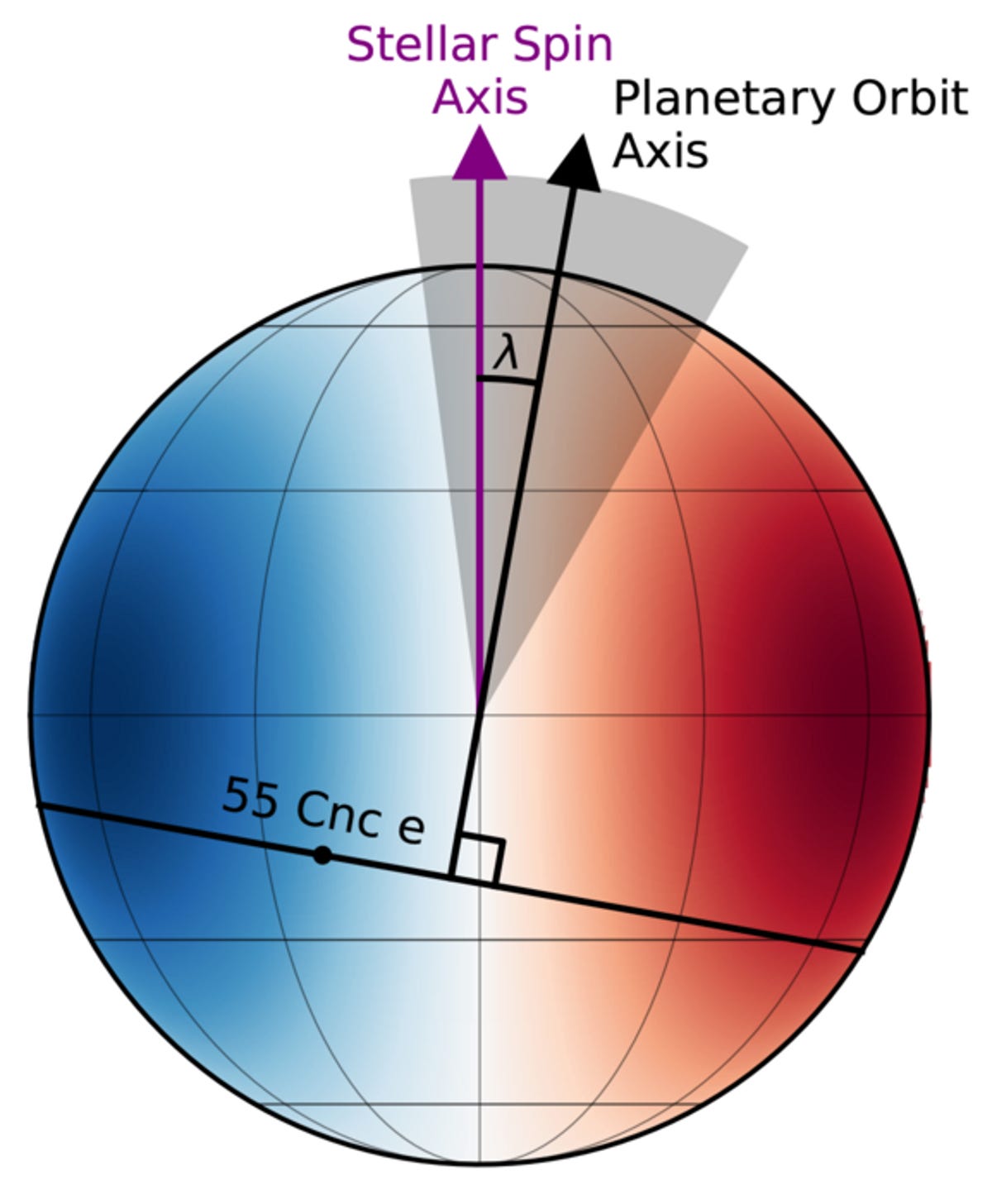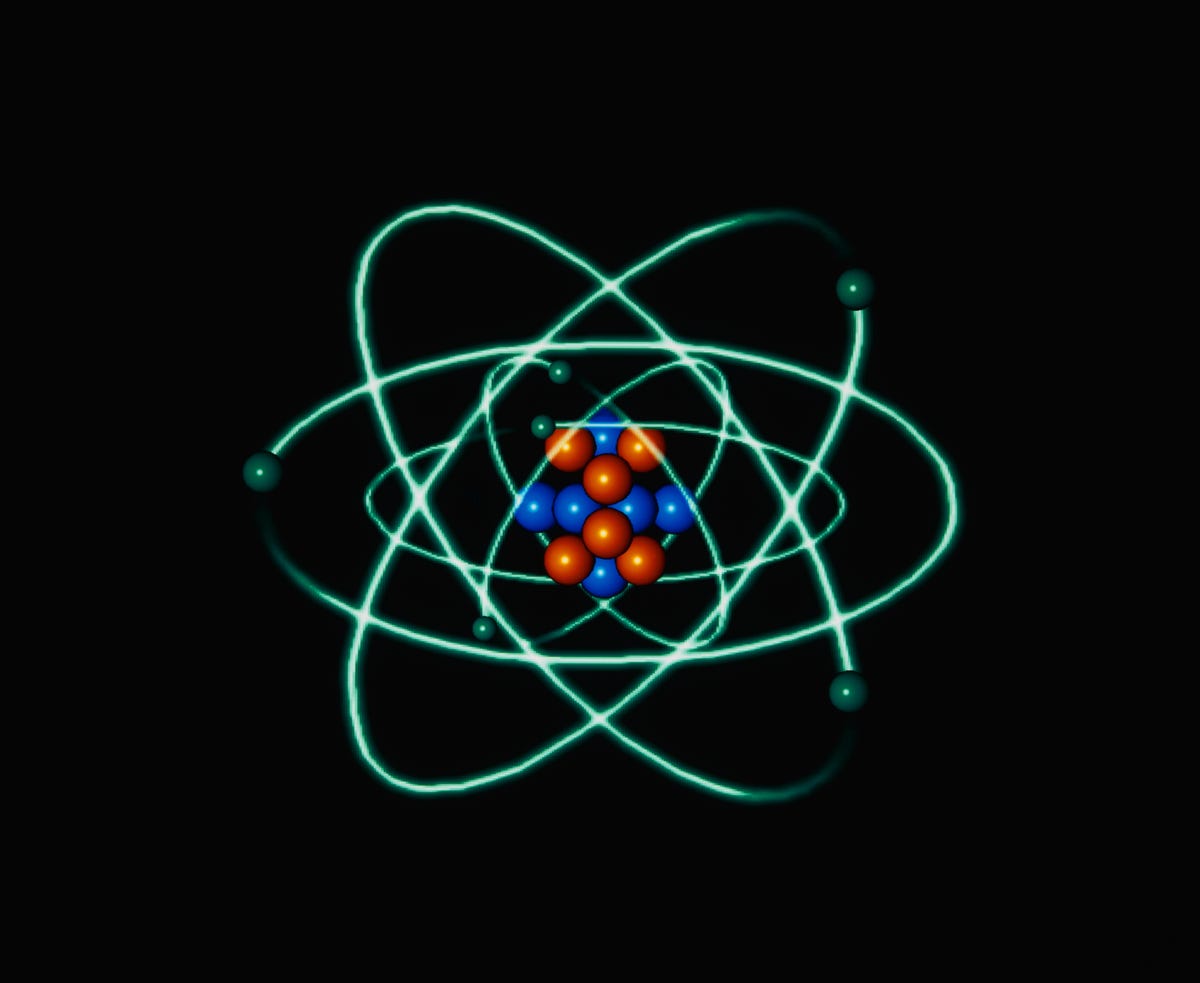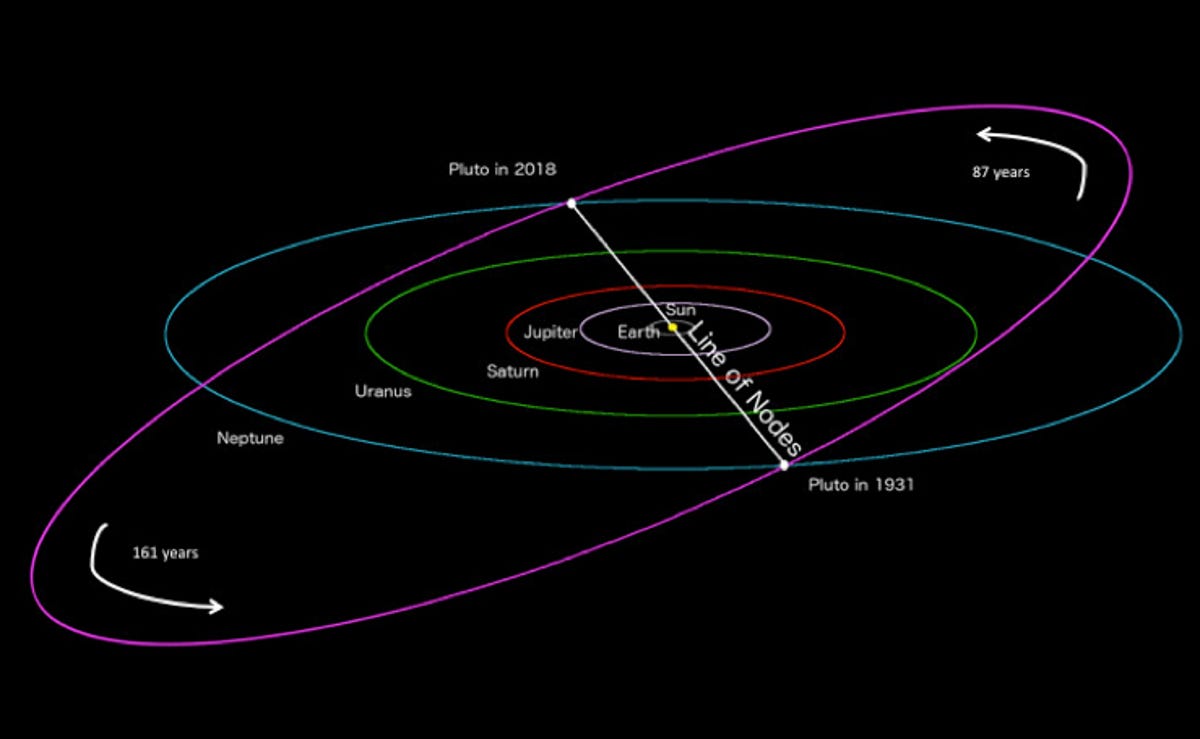
Only about 41 light-years away from Earth, our planet has a hellish cousin. It's a strange world named 55 Cnc e, otherwise known as Janssen, that tests the boundaries of how close a planet can get to its host star before exploding; evaporating; melting. Janssen orbits its star tightly enough that if you traveled there, an entire year would last just 18 hours. It has a surface that's literally a lava ocean.
And, as if that wasn't enough character, this orb doesn't even circle its star on a flat trajectory.
In our solar system, of course, planets orbit the sun on an even path like the rings around Saturn -- a pancake of little realms, though technically ex-planet Pluto kind of does its own thing. But Janssen? Nope. This globe is fully a planet and fully misaligned. For some reason, it mysteriously traverses an alternate plane and even kind of shields itself from our telescopes.
So, unsurprisingly, this super-Earth (it can fit about eight Earths inside) earned the attention of astronomers around the world.
"55 Cnc e is such an interesting target and dare I say crowd favorite!" said Lily Zhao, a research fellow at the Flatiron Institute's Center for Computational Astrophysics in New York City.
One of many zeroing-in on this orb, Zhao and fellow researchers published a paper Thursday in the journal Nature Astronomy that appears to answer a glaring question about Janssen. We know it's shockingly hot and quite simply weird, yes, but how did it become the scorching, oddball place it seems to be today?
Armed with a tool called the Extreme Precision Spectrometer, or EXPRES, they found that the blazing world likely formed in a relatively cooler orbit long ago (which was still extremely warm, to be clear) but got progressively pushed toward its star, named Copernicus, due to gravitational whirlpools created by the system's four other planets.
Eventually, Janssen reached the spot it's in right now, sweltering next to radiant starbeams and under humanity's microscope.

An informational diagram showing how 55 Cnc e follows a strange orbit around its sun, Copernicus.
L. Zhao et al./Nature Astronomy 2022Previously, scientists had suggested that the gravity of a nearby red dwarf star, rather than adjacent planets themselves, was to blame for Janssen's relocation. However, Zhao explained, "because we find that 55 Cnc e has an orbit aligned with the equator of the star, this favors more dynamically gentle ways of migration."
Little nudges from the family, you might say.
Thanks to EXPRES, this marks the smallest measurement of its kind to date. This means that, in the future, the machine's promise could be boundless.
"EXPRES is part of a generation of instruments designed to be more precise and therefore sensitive to smaller signals, like the kinds from habitable or even Earth-like planets," Zhao said. "We are now capable of detecting signals of the magnitude needed to find Earths elsewhere in the universe, planets that would be hospitable to life.
"Now it's just a matter of getting enough data to find them!"
When I first heard about how Copernicus' star system has planets following trails that don't quite match up, I'll be honest, I imagined a bunch of worlds orbiting a star like electrons on Jimmy Neutron's atom shirt swirling around a nucleus of protons and neutrons.
The good news here is that I was maybe right.

This is not a very anatomically accurate image of an atom. But it is what I assumed Copernicus might look like, in my far-fetched imagination. The green bits are "electrons" and the blue and red bits are protons and neutrons at the "nucleus." Also, Jimmy Neutron's shirt has a pic like this.
Getty ImagesThough scientists know Janssen's four siblings aren't aligned with Copernicus either -- Earth-based telescopes don't see them crossing between our planet and the star, despite Janssen doing so -- we haven't measured their trajectories precisely enough to conclude how they move around.
"Since 55 Cnc e is the only planet that transits, it's the only planet for which measurements like this are possible," Zhao said. "With astrometric data, we could learn the orientation of the other planets relative to 55 Cnc e and use this measurement to anchor the orbital alignments of the other planets -- but the capacity for making a measurement like that has not yet been demonstrated."
The bad news, however, is that I was probably not right.
"From the information we have made, I think it might be unlikely that the other planets are extremely varied," Zhao said, calling on how EXPRES found Janssen to be rather aligned with its star's equator. "A very varied system would more likely be the result of some chaotic process that would not result in 55 Cnc e being so well aligned."
Other angles of physics also seem to be proving my fantastical atom theory incorrectly, such as the fact that for planets to not transit between Earth and their star, they don't really have to be highly misaligned. They could just be a tiny bit off-road.
"Because they orbit much further out than 55 Cnc e, they actually only have to be misaligned a little to no longer pass in between the star and us, so there's not a strong constraint on the other planet's orbits that way either," Zhao said.
Also, in general, star systems tend to form more aligned like ours and become jumbled with time, if they do at all. That's because planets typically rise from what's known as a protoplanetary disk of random bits of gas, dust, rock -- whatever, really -- that eventually condense into floating spheres.
But gravity has a mind of its own, pushing and pulling on stuff until it finds a balance of its liking, though that balance may or may not be wildly different from the system's starting point.

An illustration of our solar system's planet alignments. You can also see Pluto's strange shenanigans here. The Line of Nodes is the intersection between the orbital plane of Pluto (purple) and that of Earth (white). It happens in 87- and 161-year intervals.
Anne Verbiscer/NASAFortunately, according to Zhao, the solar system appears to already have that special equilibrium and therefore probably won't push Mars to the heavens and bury Earth in the basement.
Nonetheless, it is incredibly intriguing to see a wonky solar system unlike our own, highlighting how different every corner of the universe is bound to be and how swiftly they can evolve. And now that we can detect them, it's all the more interesting.
"It's thrilling to now have this measurement in hand showing that the instrument we built works and is delivering the kind of results we built it for," Zhao said.









 Add Category
Add Category